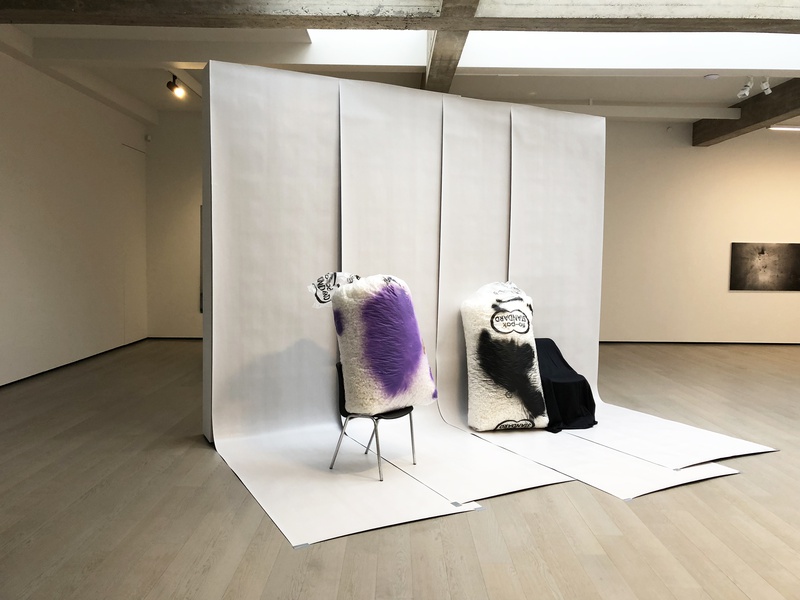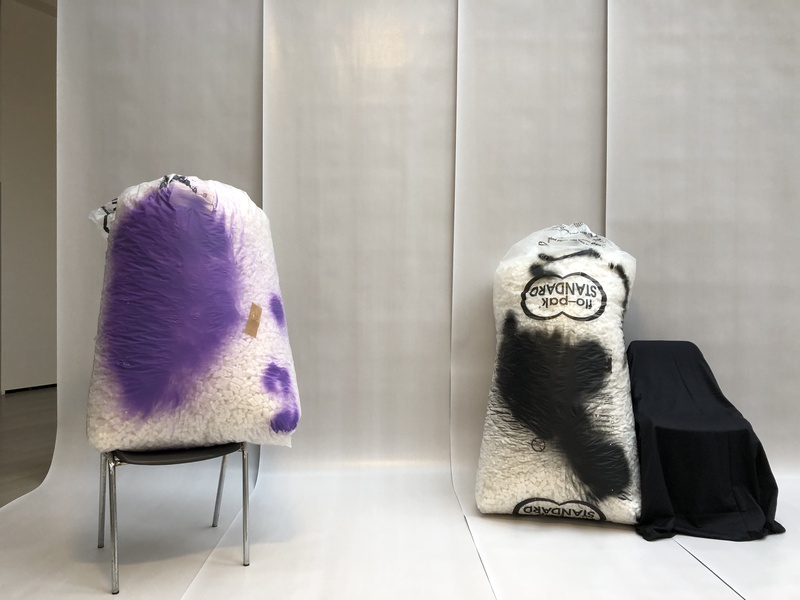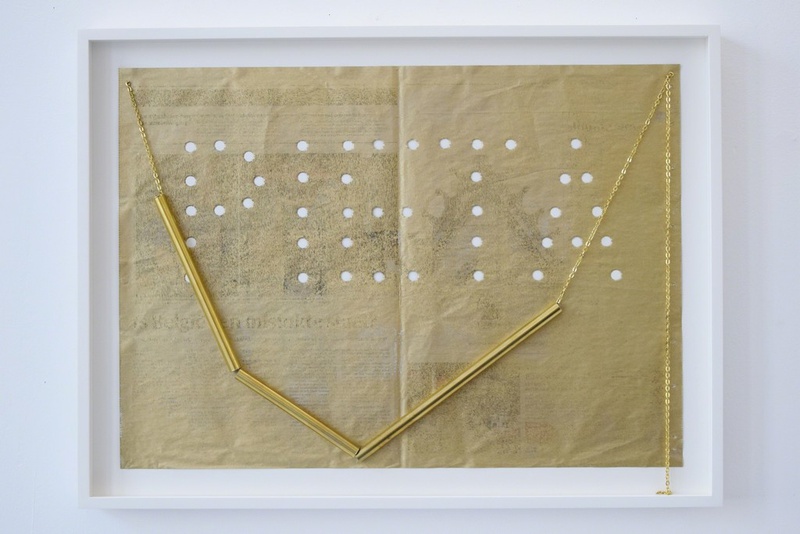A work of art without an onlooker is flawed to an extent, as the witness completes the work, he is a conspirator.
When looking at the work of Klaas Kloosterboer you find yourself continually on a slippery slope. You are faced with strange packets of painted artist's linen, sheets of golden material, paintings with balls and dots. Texts speak of pictorial references, that the abstract is actually concrete, an image that does not refer to reality but that simply is, and at the same time you feel in every fibre of your body that this is about more than mere pictorial considerations.
Kloosterboer works in his studio based on self-formulated laws ‘Others know more, see more, feel more than I do’ and ‘It is not the work that is important’. ‘Everything can be everything’. These koan-like statements excise the supposed straight line that is said to exist between his meaning and his work. An apple means sin, an apple cut into two symbolizes eroticism. An apple is an apple.
‘Art has to be a means to live a better life’, Kloosterboer once said during an interview.
‘A picture that is simply there and which must offer a port of entry to living a better life.
Yes, such works of art do exist, they fill up space, they consume materials, they were made, they hang, lie and live, and the onlooker looks on.’
‘A ritual of ownership, an attack on emptiness,’ is how Kloosterboer describes it. This implies that he does not want to take up much space, that it has to be a significant contribution. Emptiness is a valuable asset.
Perhaps this is how it works: the process in the studio reflects life. The work absorbs the considerations, embodies the rules, and absorbs all aspects of creation. This results in works that contain doubt, work that is unstable, dynamic and possibly even inconsequent. Due to the similarities with reality, you can reach greater heights, come one step closer to a better life. Dilemmas occur in real life and in the studio: how do you achieve a balance in what you think and do? Is thinking simply delaying action, does thinking mean doubt? Every decision when creating art pushes the work in a certain way, thus preventing it from going in a different direction. One is possible, the other not. You can’t have it all.
For You want it darker, Kloosterboer made an installation with silver cardboard. He compares pieces of fabric with words, words are commonplace, everyone uses them. But what those words communicate is unfathomable, how do we know that we understand one another? ‘The combination of fabrics forms an enigmatic image. I think the enigmatic aspect is important, just like concealment. Everything has to be clear and transparent nowadays, but to my mind, identity is in part that which we conceal.’
The contradictions of Kloosterboer, making a work and then claiming that the work is not important. And why should one want to be clear? Why should a person deny the riddle, and say he knows something?



